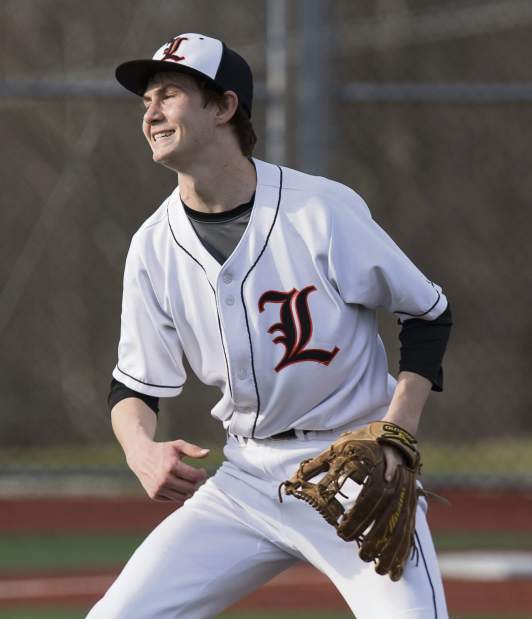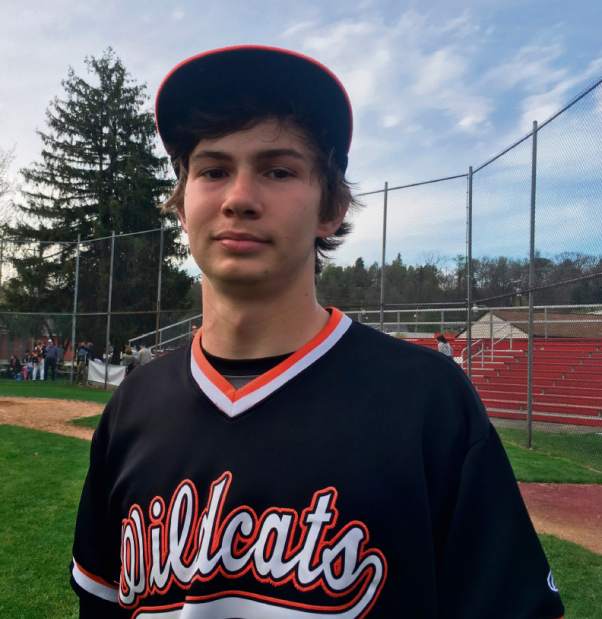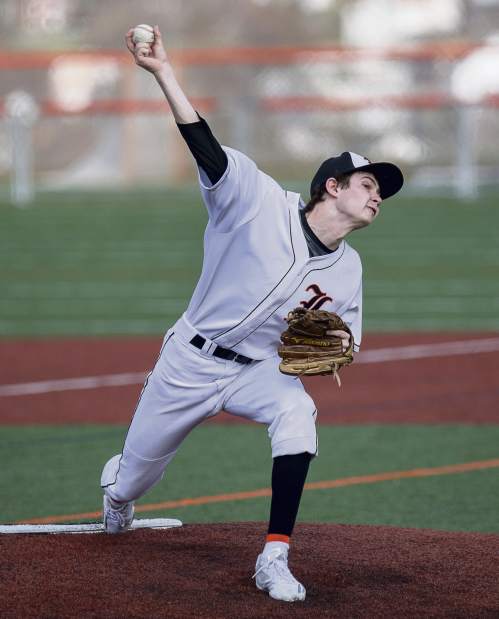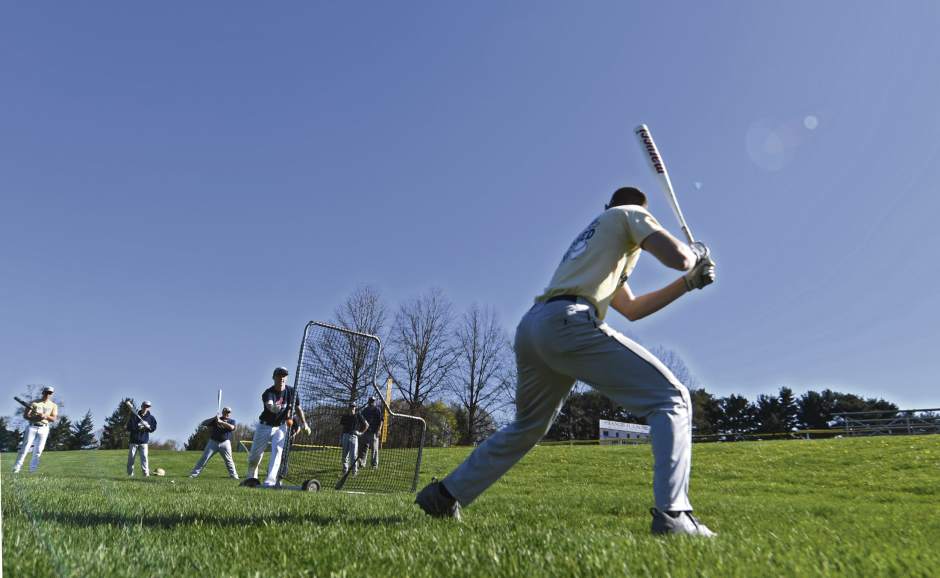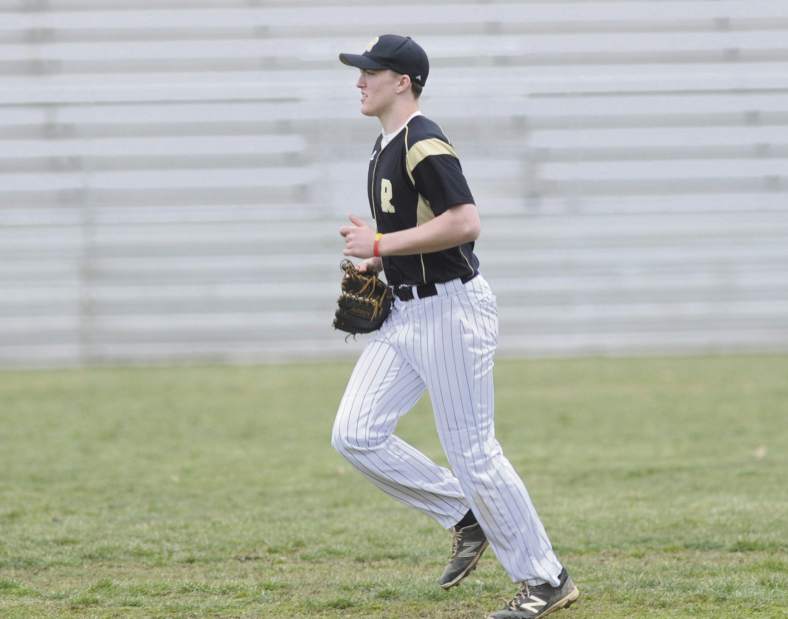High school baseball coaches value versatile players
Ryan Shawley carries three baseball gloves in his Louisville Slugger backpack because there's a real chance he could wear them all that day.
There's an orange, black and white infielder's glove that matches his team colors but also a plain tan glove that won't distract batters when he pitches and a first baseman's mitt incase his coach wants him there instead.
“I knew growing up as a kid, the more positions you play, the more you're an asset to your team,” said Shawley, a shortstop, pitcher and first baseman who could handle third base or second as well. “If they need me to, I'll go out there and play the outfield. I'll try my best.”
A senior starter for top-ranked Latrobe, Shawley and other easily adaptable WPIAL players just like him provide “position flexibility,” a trendy term for architects of MLB rosters, but high school coaches have value that versatility as well.
“Whatever helps my team win,” Shawley said, “that's the main goal for me.”
Shawley likely will play third base in college, but he started Friday afternoon at shortstop and seamlessly shifted to first base when his coach changed pitchers.
Once during American Legion season, Shawley remembered, he played all four infield positions in the same game.
“That's high school baseball,” Latrobe coach Matt Basciano said. “You've got to be flexible to get out there. We probably have quite a few kids who are not playing their typical position from up through the (youth league) ranks.”
When it comes time to submit all-section nominees, Freeport coach Ed Carr isn't sure what position to list for James Flemm, a senior who's designated simply as an infielder/outfielder on the team's roster. Flemm, owns a team-best .545 batting average as an outfielder, second baseman, shortstop and pitcher.
“Depending on who pitches, that tells where he goes,” Carr said. “I try to know who my starting pitcher is the day before. That gives him an idea where to take more balls (at practice). He kind of gets a little heads up.”
Not every team has an athlete suited to fill a utility role, but coaches who do find that position flexibility invaluable. Strategically, they can switch pitchers without removing a productive bat from the lineup. But it also will limit the short-term impact of injuries and can let a coach rest a slumping hitter.
“Personally, I like having those guys who are versatile, no doubt,” said Carr, who has many movable pieces in his lineup. “If you go into a season thinking this guy is your (only) third baseman or shortstop, I've been bitten by that bug too many times. A guy can be struggling either at the plate or in the field and you have no other option.”
That added versatility is more crucial for teams with small rosters. As a first-year coach at Class 2A Riverview, Bill Murray stressed team-wide flexibility as the Raiders readied for the season.
“Being that we're so young and have a lot of moving pieces, everybody's learning infield and outfield positions,” he said. “They have to be ready to play anywhere.”
West Allegheny coach Bryan Cornell appreciates the impact even one utility player can make, even though the Class 5A contenders don't feature one this season. When the Indians won the WPIAL title three years ago, they had senior Tyler Amedure who could catch, pitch, play the outfield and both middle infield spots.
“It gives you a lot more options,” Cornell said. “Throughout the course of a baseball season, you're going to have guys go hot and cold. If your next-best hitter is an outfielder, but your third baseman is not hitting, you can move your utility guy.”
However, not everybody is well suited for such a versatile role. Besides being a well-balanced athlete, it requires a smart player who can handle the additional mental workload.
“It takes a player who understands the game and doesn't get overwhelmed,” said Franklin Regional coach Bob Sadler, noting how each infield spot has a different responsibility on bunts. “To play multiple positions, you need a kid with a cerebral mindset. A kid like that probably goes home and he's watching baseball. He sees it, and most likely he's lived it early on.”
That early exposure probably is key, said Sadler, who encourages players to diversify.
“It's very good for kids to play multiple positions at a young age,” he said. “Don't get slotted into short because whenever you come up as a ninth-grader, there might be a shortstop already there who's a junior or a sophomore.”
Before every game, Blackhawk senior Nick Cerani leaves his infielder's glove near second base and heads to the outfield grass to shag flyballs in warmups. Afterward, he heads for the infield dirt, switches gloves and fields grounders before first pitch.
“Up until last year, I was always an infielder,” Cerani said. “But we had two great middle infielders, so there wasn't really a spot. Coach (Bob) Amalia tried to get me on the field because he saw potential, so he trained me as an outfielder.”
Cerani has played right and left fields, shortstop, second base, third base and pitcher for the Cougars, who are 12-0 and ranked first in WPIAL Class 4A. Teammate Mike Turconi, a junior committed to Wake Forest, also can play six positions.
“At our level, unless they're really, really good athletes, you've got to try to keep them in one or two positions,” Amalia said. “But those two have the ability to pretty much do everything.”
Shawley started his super-utility role before he joined Latrobe's varsity roster. As a kid playing for his stepfather's youth-league team, Shawley tried every position on the field, including catcher.
“I'm going (to college) to be a teacher, and I plan on coaching,” said Shawley, a Chatham recruit, “so that's something I definitely want to incorporate with my team when I get a chance to coach. You're going to help your team more if you can play multiple positions rather than just being a second baseman.”
Chris Harlan is a Tribune-Review staff writer. Reach him at charlan@tribweb.com or via Twitter @CHarlan_Trib.


